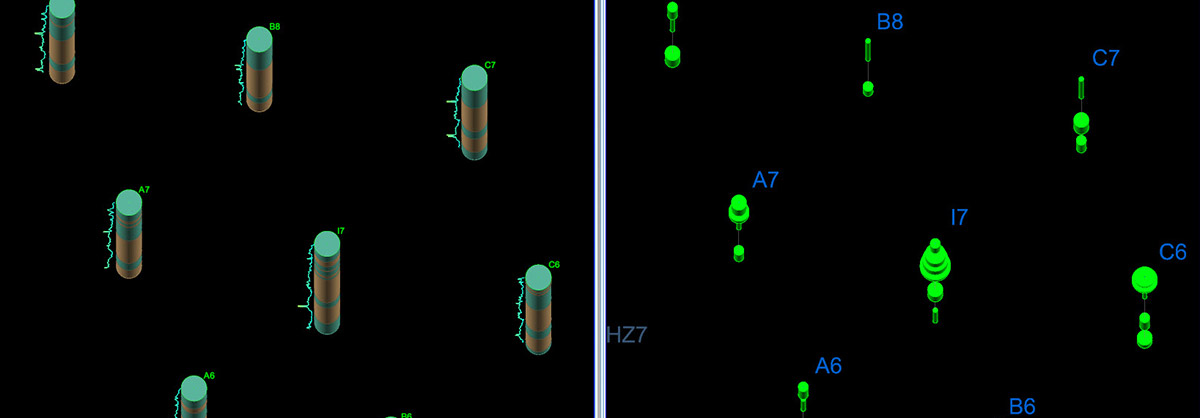June 2020 Issue Index
Measurement while drilling data
Advances to interoperability between BlastLogic and Eureka will help operations improve geological modelling and their drill & blast outcomes.
Despite widespread industry interest in using Measurement While Drilling (MWD) data to improve mine operations, few systems have proven capable of interpreting this data so that it can be used in drill & blast in a standardised and repeatable fashion.
At the heart of this is the fact MWD data is susceptible to variability due to geology, sensor and equipment calibration and operator influence.
Upcoming releases of blast design solution Maptek BlastLogic and interpretation platform Maptek Eureka will help customers bring their downhole drilling data to life.
‘One issue is that the raw MWD data from the drill navigation systems hasn’t been validated – exceptions or anomalies to the data can be missed,’ Maptek Group Product Manager, Mine Operations, Mark Roberts said.
From inception BlastLogic has provided a direct interface to drill navigation data and a function to validate and associate the as-drilled information to design holes.
While Maptek has led the way in this capability, the nature of the data collection has left a gap which prevents the full picture being seen.
‘About 30% of data doesn’t match – ad hoc or unplanned holes, re-drills, missing information that makes as-drilled data more difficult to match to a design hole, or the hole is too far out of tolerance to be linked to a design,’ Roberts said.
‘Using the as-drilled data has traditionally been a secondary thought. BlastLogic raises the profile of that as-drilled data and references it to perform a reconciliation to how well the drilling matches design.’
Streamlining the process for passing the data between BlastLogic and Eureka has strengthened this functionality.
Eureka provides a standard repeatable way to visualise drillhole geophysical data and automatically assigns lithology boundaries based on changes in the drillhole geophysical properties, quickly identifying different bands.
Intervals are created in BlastLogic from the resource model and passed through to Eureka together with the MWD data. Eureka interprets and updates the intervals.
‘It’s an automated tool so the processing of the data can happen fast, whereas if you had to do it manually it could take days,’ Roberts said.
This is important in the dynamic mining environment where holes are loaded within hours of drilling.
Validated data is brought back into BlastLogic and the charge plan and timing design can be automatically updated using the most up-to-date geology.
Matching blast design to validated geology allows more accurate charge placement, which provides more even fragmentation.
Safety is improved – risks from overcharging, fly rock and overpressure, and potential dilution of materials can be mitigated through better knowledge of the geology.
‘You can ensure you’ve got the right amount of charge exactly where you need it,’ Roberts said.
‘MWD data is noisy by nature and a lot of factors impact its usability. Maptek tools and the compatibility between them give geologists and engineers a chance to quickly generate the most complete and up to the minute picture possible.’
‘While there’s automation to increase speed, there’s still the capacity for geologists to see the correlations to the resource model and further refine or correct the data association.’
Roberts is excited about the potential to use MWD data with Maptek DomainMCF, which uses machine learning to rapidly generate block models directly from grade control drilling data.
Similar benefits could be realised for BlastLogic. Fast cloud processing provides the ability to run many scenarios on the same data and gain a high confidence level in the results.
- Measurement while drilling data has long been available but is not always used to full effect
- Validating and associating as-drilled data to design holes is now possible with Maptek solutions
- Better knowledge of the geology mitigates risk of material dilution and loss of ore

